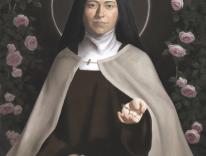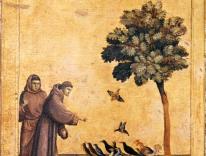On October 5, 2002, the quiet town of Seneca Falls, New York, enjoyed a rare visit from the Secret Service: former First Lady Rosalynn Carter was being inducted into the National Women’s Hall of Fame [NWHF]. That accounted for the Secret Service, but I was there for another inductee who would not have commanded, or have wanted, high-level security: Dorothy Day. My good friend, and early Catholic Worker, Margaret Driscoll had been promoting Dorothy’s admission to the select company for three years, and I was there to share her success.
I had made the six-hour drive from Vermont to upstate New York for other reasons as well. The "crisis in the church," particularly the sex scandals, had caused certain icons of virtue to fall from my personal hall of fame. In Seneca Falls, however, I would be in the company of trusted friends and honorable women. Our sole purpose was to celebrate, to now praise famous women.
Driving west to Seneca Falls along Interstate 90 offers an opportunity for contemplating "fame." You pass the Boxing Hall of Fame at Canastota, New York, and the Baseball Hall of Fame at Cooperstown. Seneca Falls is the home of the NWHF because it was the site of the first women’s rights convention in 1848. The suffragist Elizabeth Cady Stanton lived there, and was unable to leave her large brood of children.
I have never visited those shrines to male prowess, but it would be hard to believe that they could be more modest than the site of female fame at Seneca Falls. Housed in a small former bank building on Fall Street, the limited display space is crowded with 195 plaques, each with a portrait of the honoree and a short biography. One striking image is stacked on top of another, in the manner of nineteenth-century picture galleries. One wonders where the new inductees will be squeezed in.
The actual induction ceremony was held in the gymnasium of the New York Chiropractic College, and living inductees like Mrs. Carter and Justice Ruth Bader Ginsburg gave short acceptance speeches. Those admitted posthumously were represented by family members or scholars who had researched the career of the inductee.
Dorothy Day was represented by her granddaughter, Martha Hennessy, a woman in middle age who spends her days working with children with learning disabilities. After expressing in a soft clear voice the simple gratitude of the family and the Catholic Worker for the honor, Hennessy spoke with fervor on how to properly honor her grandmother. "We are about to unleash overwhelming force against an impoverished nation," Hennessy said. "If we really want to honor [Day] we should put her ideals into action. She was larger than life because she could galvanize others to act, and she still does." The applause was determined—like a welcoming handshake.
"Larger than life." Dorothy Day often objected to people calling her a "saint," because it then became too easy to dismiss her. Would she have objected to "famous" as she did to preemptory sainthood? That would have been problematic. Dorothy needed to be "famous" in the sense of being a public person, a known advocate, a leader for peace and justice. The Catholic Worker and Dorothy’s writings and public appearances were a strategy for a prophetic message. Martha Hennessy was right, "she could galvanize others to act, and she still does."
Being famous is, however, a dubious honor and a significant burden. There are the public face to be maintained and the private soul to be nourished. Hollywood glamour was represented that day with the induction of Lucille Ball. I wondered whether I would have loved Lucy as much in person as I did on the screen. Dorothy Day, in her autobiography, speaks of a "long loneliness"—the inner sense of self that she nourished through sacrament and prayer. For all her "fame"—and her necessary pursuit of public notice-Dorothy was devoted to Saint Thérèse’s vision of the little way, the hidden life before God.
Alongside the displays of famous women in the converted bank there is a "Book of Lives and Legacies." For a modest fee, anyone can nominate a significant woman in one’s life: mother, teacher, counselor, friend. With the fee, a letter chronicling the life and accomplishments of the person is sent to the Hall. Each letter is encased in plastic and placed in a large leather binder. These are not famous lives, but nonetheless lives of everyday dedication and devotion.
I believe Dorothy Day would have been most taken with this "Book of Lives and Legacies," and with the stories of these women who loved and persevered in so many plain but exceptional ways. She often quoted Father Zosima’s advice in The Brothers Karamazov: "Love in practice is a hard and dreadful thing compared to love in dreams." That could be the right citation for each woman honored at Seneca Falls, whether she has a picture on display, or a heartfelt letter in the book of lives.
Please email comments to [email protected] and join the conversation on our Facebook page.
Share
Previous Story
How a Lutheran Saw It
Next Story
The state of war

